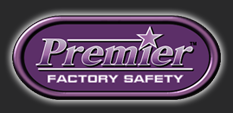In response to the recent storms which blew through Texas and the Southeast, OSHA has
released a statement to recover workers, volunteers, and the general public during the storm
cleanup process. And while this statement is specifically released to residents of Texas,
Mississippi, Alabama, Tennessee, and Georgia, the basic principles would apply to all storm
cleanup operations around the country.
“Recovery work should not put you in the hospital emergency room,” said Kurt Petermeyer,
OSHA’s regional administrator in Atlanta. “A range of safety and health hazards exist following
storms. You may minimize these dangers with knowledge, safe work practices and personal
protective equipment. OSHA wants to make certain that all working men and women, including
volunteers, return home at the end of the workday.”
For starters, if you are in the emergency recovery industry, you should have the following
protective measures in place: evaluating the work area for hazards; employing engineering or
work practice controls to mitigate hazards; using personal protective equipment; assuming all
power lines are live; using portable generators, saws, ladders, vehicles, and other equipment
properly; and heeding safety precautions for traffic work zones.
In addition, your occupational safety and health policies and procedures should be reviewed
routinely by a qualified third party occupational safety and health auditing firm to ensure all
potential hazards are accounted for and that all policies and procedures are updated with the
newest regulations and best practices.
If you have any questions about how this statement impacts your business, or about your
occupational safety and health policies and procedures, please contact us. If you have anything to
add about the importance of routine third party occupational safety and health audits, please
leave a comment.

Leave A Comment